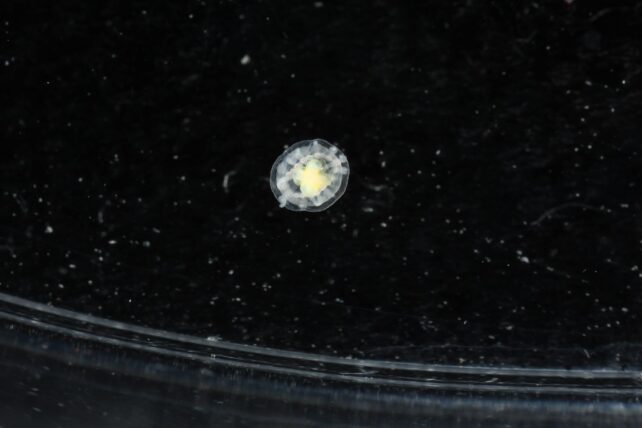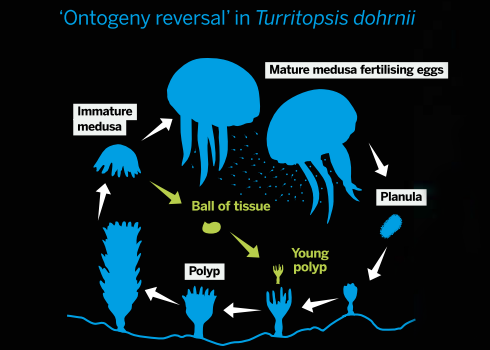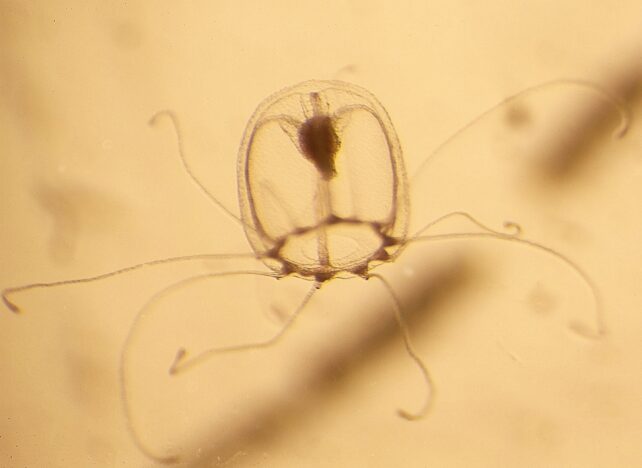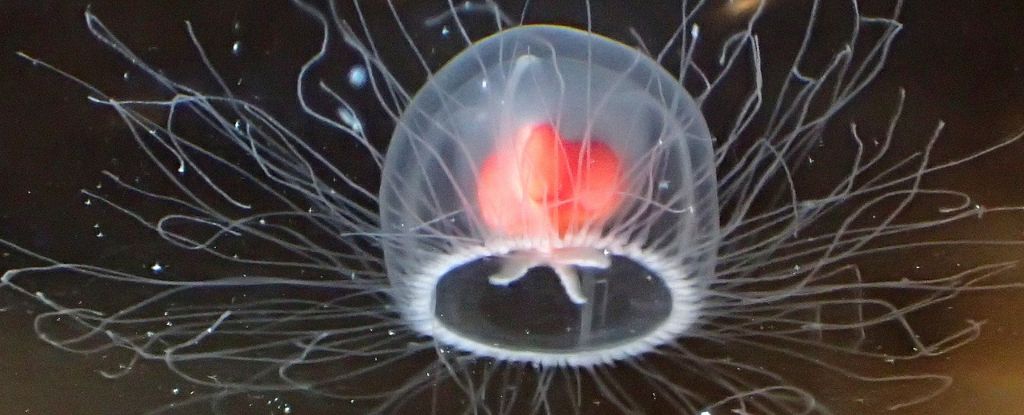Products You May Like
The secret to eternal life has been swimming in Earth’s oceans for millions of years.
The ‘immortal jellyfish’ is so named because it can, theoretically, live forever. For all we know, some of these tiny, translucent blobs have been drifting along since well before the demise of the dinosaurs, around 66 million years ago.
That might sound fictitious, but the potential to live for millions of years lies well within the realms of biology – at least for this one curious species.

When an immortal jellyfish (Turritopsis dohrnii) grows old or damaged, the species can evade death by reverting to a baby polyp stage. It does so by reabsorbing its tentacles and coming to rest as a blob of undifferentiated cells somewhere on the seafloor.
From here, the young polyp can then bud and produce new adult forms, each smaller than the nail on your pinky when fully grown.
More importantly, these mature buds are genetically identical to the polyp.

The backwards life cycle has endowed the hydrozoan with the nickname the ‘Benjamin Button’ jelly‘ – in reference to F Scott Fitzgerald’s fictional character who is born old and dies young.
The creature was first described by scientists in 1883, but it wasn’t until a century later that experts accidentally discovered its eternal life cycle while keeping it in captivity.
In the years since, studies have shown that colonies of immortal jellyfish kept in the lab can regress into a polyp stage and begin life again up to 10 times in two years.
The immortal jelly is the only known species that can rejuvenate itself after sexual reproduction, making it ‘biologically immortal’.
While the species is thought to have originated in the Mediterranean, it is now abundant in every ocean in the world.
Despite its ubiquity, experts still don’t quite understand how the jelly lives for so long. In 2022, genomic research on the genus identified no less than a thousand genes related to aging and DNA repair.
If scientists can figure out which genes are present or missing in the immortal jellyfish, compared to its relatives, it could reveal the cellular mechanisms behind its everlasting life.

In 2019, scientists first compared the genetic expression of cells from an immortal jellyfish polyp to a newborn adult ‘medusa’ with tentacles and a bell.
They found differences in how some cells functioned, which suggests that specialized cells are somehow being reprogrammed, like resetting a clock back in time.
This doesn’t mean that immortal jellyfish can never die; they can still pass away from injury or starvation. But the possibility of life persists for these creatures like no other.
“The lesson of Turritopsis is profound,” writes the zoologist Ferdinando Boero, who was in charge of the lab that first discovered the immortal life of the jellyfish in the 1990s, “… if we explore biodiversity, we will find exceptional organisms that do exceptional things.”
